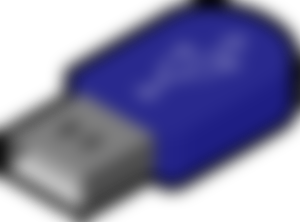Installing Linux Mint Alongside Windows
With the evolving world of technology there's an increasing demand, for operating systems that're versatile and efficient. Linux Mint, a known Linux distribution has gained a following thanks to its user friendly interface and strong functionality.
If you're someone who wants to explore the realm of Linux while still keeping Windows as an option installing Linux Mint alongside your existing Windows setup is a decision. In this guide we'll take you through the step by step process of installing Linux Mint alongside Windows ensuring a transition, between both operating systems.
Preparation
Backing up Your Data; It's crucial to safeguard all your data by creating a backup before making any changes, to the system as this will help prevent potential loss.
Verifying System Requirements; Make sure that your computer meets the minimum system requirements needed to run Linux Mint.
Creating a Bootable USB Drive
Obtaining the Linux Mint ISO; Go to the Linux Mint website. Download the ISO file for your desired version.

Crafting an USB Drive; Utilize tools such, as Rufus or Etcher to fashion an USB drive using the ISO file you downloaded.
Partitioning Your Hard Drive
Understand Disk Partitioning: Learn about the concept of disk partitioning and how it's crucial for a dual-boot setup.
Free Up Space: Resize your existing Windows partition to free up space for Linux Mint. This can be done using the built-in Disk Management tool in Windows.
BIOS/UEFI Settings
Access BIOS/UEFI: Restart your computer and access the BIOS/UEFI settings by pressing the designated key during startup (usually F2, F12, or Delete).
Disable Secure Boot: If your system has Secure Boot enabled, disable it to allow Linux Mint to boot.
Installing Linux Mint
Boot from USB: Insert the bootable USB drive and restart your computer. Select the USB drive from the boot menu.
Linux Mint Installation Wizard: Follow the installation wizard, selecting your preferred language, time zone, keyboard layout, and installation type.
Manual Partitioning
Choose Installation Type: Opt for the "Something else" option to manually partition your hard drive.
Create Partitions: Create a root partition ("/") and a swap partition. You can also create a separate home partition for your personal files.
Grub Bootloader
Choose Boot Device: During installation, select the device where you want to install the GRUB bootloader. This should be the same device where your Linux Mint installation resides.
Complete Installation: Continue with the installation process, allowing the installer to complete its tasks.
Post-Installation Steps
Configure GRUB: If you encounter any issues with the bootloader, you might need to repair or configure GRUB to ensure both Windows and Linux Mint are accessible.
Update and Upgrade: After the installation is complete, update and upgrade your Linux Mint system to ensure you have the latest software packages.
Switching Between Operating Systems
Boot Menu: Whenever you start your computer, you can choose between Windows and Linux Mint from the GRUB bootloader menu.
Default Boot OS: You can set a default operating system to boot into if no choice is made within a certain timeframe.
Data Sharing Between Systems
Access Windows Partitions: Linux Mint allows you to access and read files from your Windows partitions.
NTFS Compatibility: Linux Mint can work with NTFS partitions, which are commonly used by Windows.
In the realm of operating systems, having options is a boon. With the step-by-step guide provided above, you can confidently venture into the realm of Linux Mint while still having the safety net of your familiar Windows environment.
By taking the time to understand the installation process and following each step carefully, you can enjoy the best of both worlds – the flexibility and customizability of Linux Mint and the familiarity of Windows. Embrace the power of dual-booting and open the door to a world of possibilities.

Debian GNU/Linux is the parent of most popular Linux OS, including Ubuntu, Mint, etc.